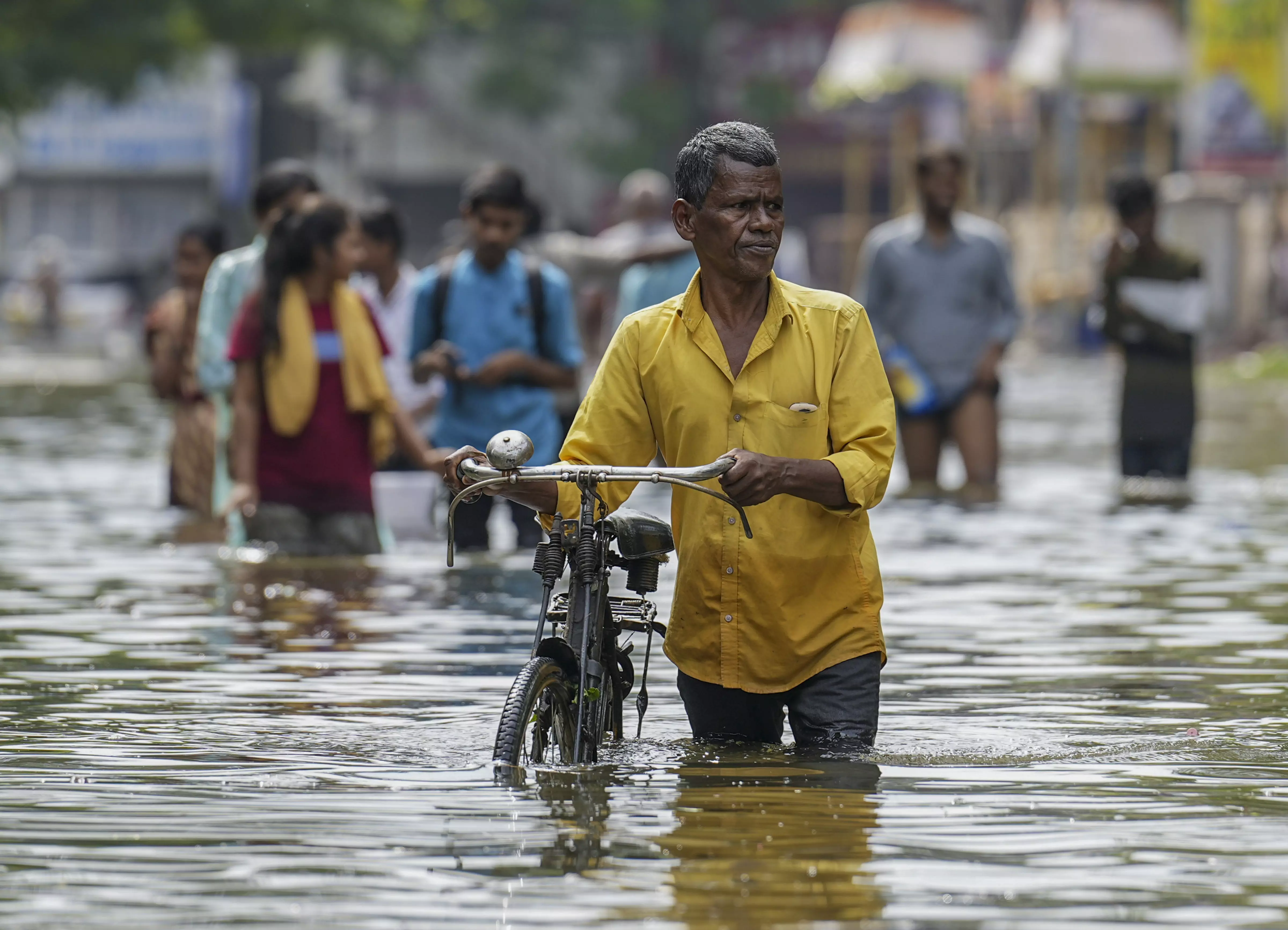
Study reveals sharp increase in number of people affected by tropical cyclones since 2002

New Delhi, Dec 21 (PTI) The number of people globally impacted by tropical cyclones has nearly doubled from 2002 to 2019, reaching nearly 800 million, according to a study.
While more people are affected by tropical cyclones in Asia than any other region, every affected area saw an increase in the number of people exposed to tropical cyclones, which are expected to become more intense and possibly more frequent as the climate warms, the researchers said.
"Although our study period is not sufficiently long to understand long-term trends, we observe a steady increase in both population and person-days exposure for all storm intensities in the past two decades," said Renzhi Jing, the study's lead author and a postdoctoral scholar at Stanford University, US.
The age distribution of those exposed to cyclones has shifted away from children under the age of 5 towards people who are aged 60 and older compared to the early 2000s, tracking with population trends in the regions most affected.
The findings, published in the journal Nature, also found that people exposed to tropical cyclones are more socioeconomically deprived than those unexposed within the same country, and this relationship was more pronounced for people exposed to higher-intensity storms during the study period, which was from 2002 through 2019.
Researchers say that characterising the patterns and vulnerabilities of exposed populations can help identify mitigation strategies, and assess the global burden and future risks of tropical cyclones.
"The increased exposure to cyclones is attributed more to changes in tropical cyclone weather patterns than to population growth," said Zachary Wagner, senior author of the study and an economist at the RAND Corporation, a nonprofit research organization.
"Given projections of increased storm intensity going forward, it's reasonable to expect a continuing increase in the number of people exposed to the most intense storms, which poses many challenges for the future," Wagner said.
The study estimates that 6 to 12 per cent of the global population is exposed to tropical cyclones each year, with a large portion of exposure occurring at lower wind velocities.
This more common exposure can have a disproportionate impact on low- and middle-income countries, especially in regions where resilience is limited, the researchers said.
The study assessed all types of tropical cyclones, including hurricanes and typhoons.
The team used improved modeling techniques to construct estimates of the number of people worldwide who may be exposed to tropical cyclones in the future.
The researchers found that tropical cyclones affected 117 countries and regions between 2002 and 2019, with a few regions accounting for the majority of exposure.
They estimate that 95 per cent of all person-days exposure during the study period come from Atlantic coastal North and Central America (5 per cent), the Caribbean (3 per cent), the Korean peninsula and Japan (6 per cent), coastal eastern Asia (43 per cent), South East Asia (24 per cent), or eastern India and Bay of Bengal (14 per cent).
The top five countries/regions with the highest person-days exposure were coastal China (33 per cent of total person-days), Japan (19 per cent), the Philippines (10 per cent), Taiwan (9 per cent) and the US (4 per cent). These regions collectively make up more than 75 per cent of all exposed person-days.
The study detected an increase in population exposure to all storm intensities during the 18-year study period. PTI

